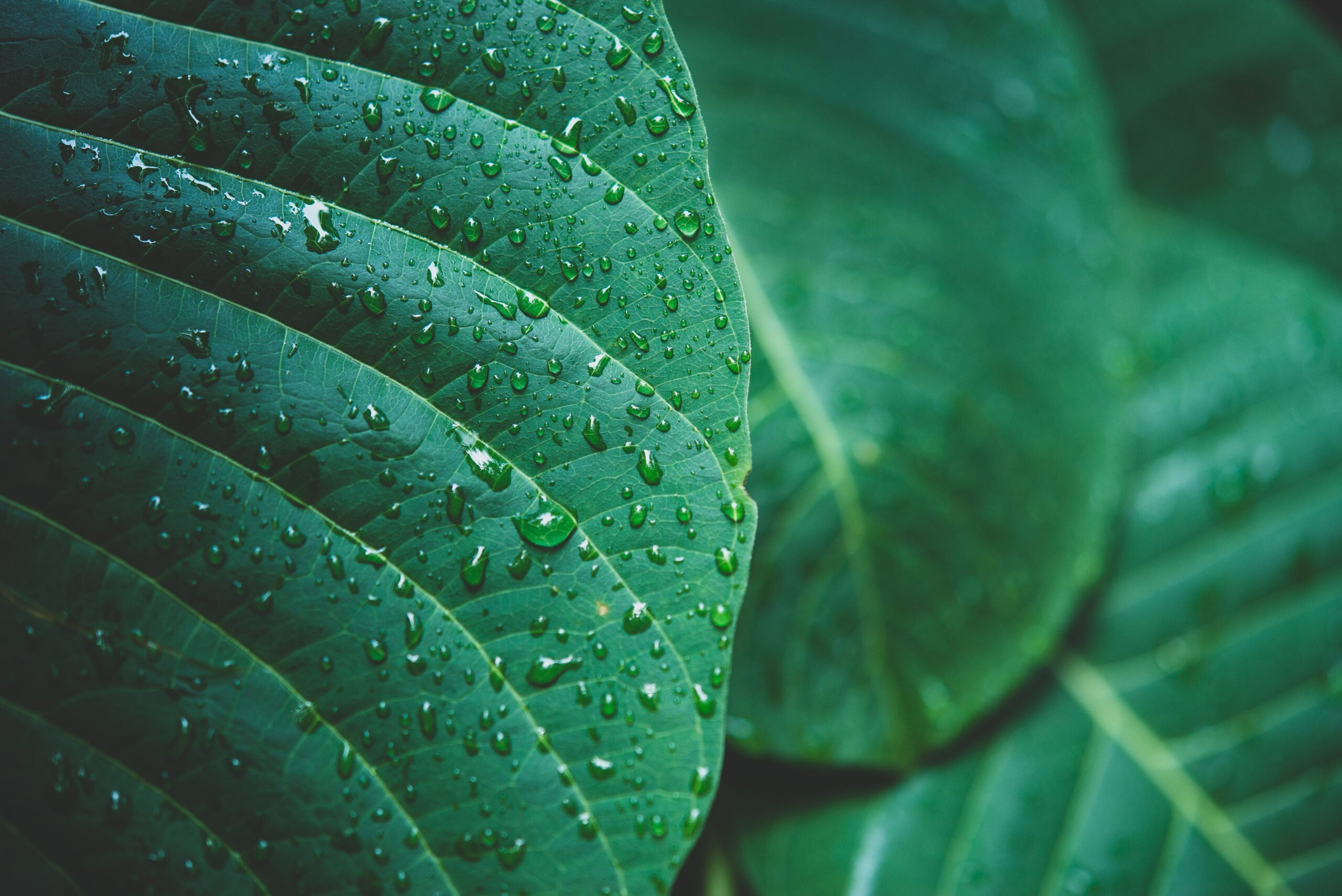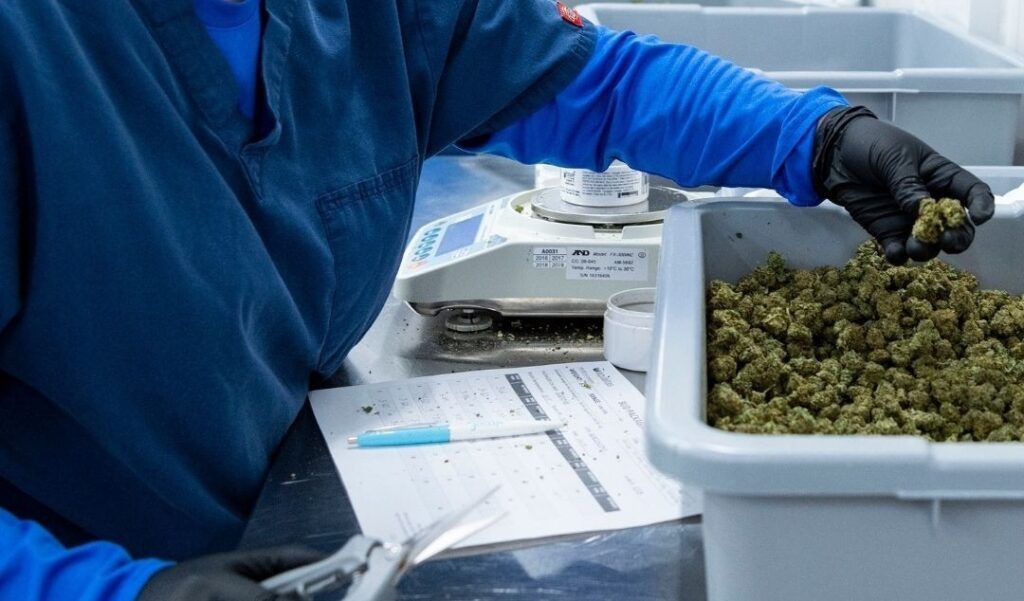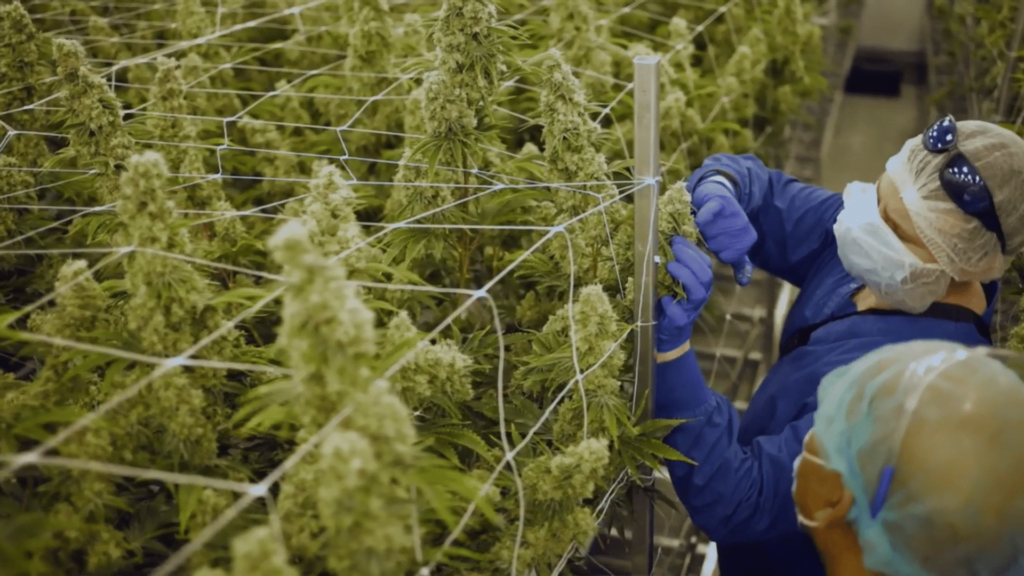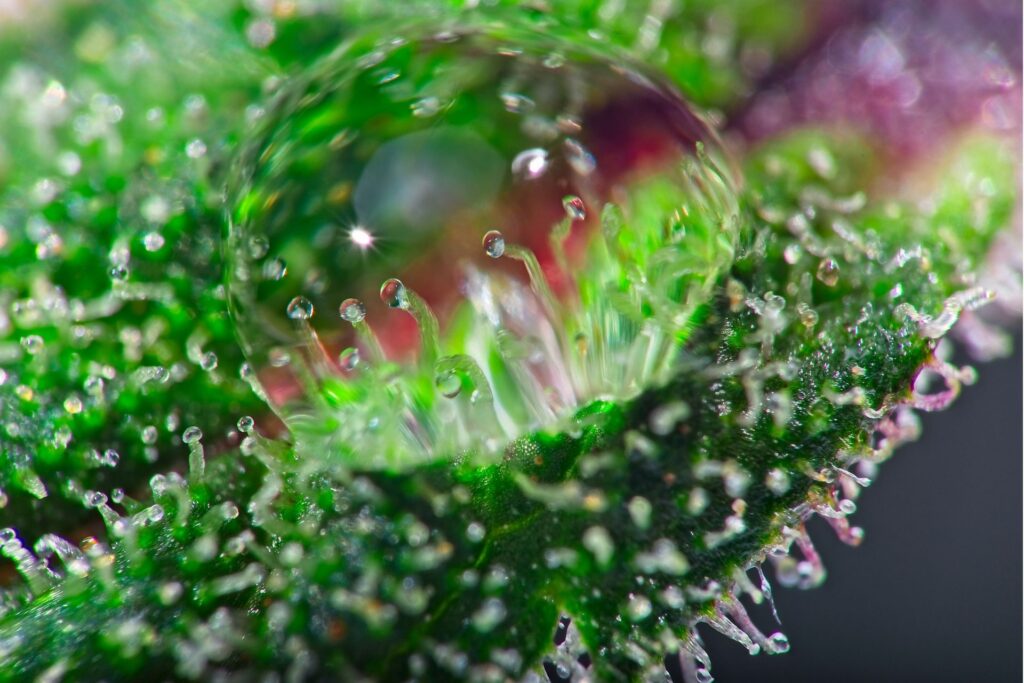Water In Equals Water Out: Determining The Right Size Dehumidifier To Defeat Mold
Simple Math Plus Multiple Insights To Help You Understand How Big A Dehumidifier You Need To Kick Mold To The Curb
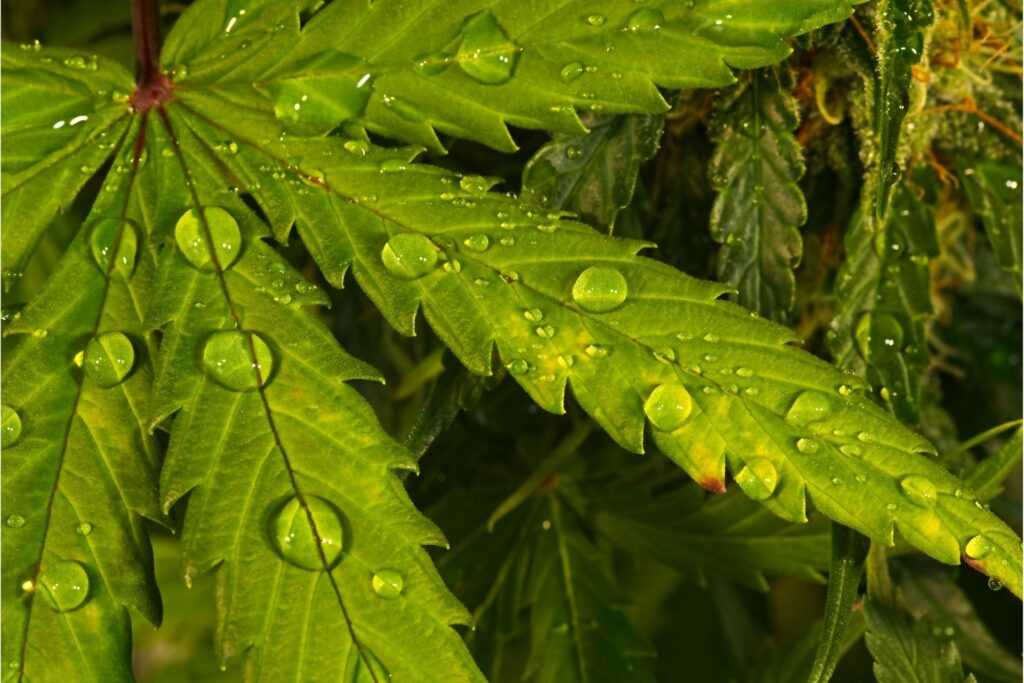
Cannabis growers all know that mold is a huge problem affecting the health of your plants. That’s why having a dehumidifier and then determining the right size dehumidifier helps keep your plants healthy by maintaining humidity levels that restrict mold growth.
Yet not all growers fully understand the basics of humidity, and how to size a dehumidifier large enough to prevent mold in your facility.
Fortunately, in his The Grower’s Source Virtual Event session called “Water In Equals Water Out,” Coleman Retzlaff, Sales Manager for Quest Dehumidifiers, does a great job of clearly explaining key humidity and mold concepts, and then simplifying the potentially complex math on how powerful a humidifier you need for your indoor grow facility.
Coleman reveals the mechanics of relative humidity, common issues growers face with humidity, what causes mold (and how to stop it), and other valuable insights. This article distills down his major points so you can learn to better prevent mold from damaging your cannabis plants.
“Temperature Is A Container”: The Higher The Temperature, The More Water The Air Can Hold

“I get people to start thinking about juice glasses and pint glasses. And, if I can get somebody to visually conceptualize a juice glass that is 100% filled with water, that’s 100% relative humidity, as far as how much that temperature can contain.”
— Coleman Retzlaff, Eastern Canada and East Coast Regional Sales Manager for Quest
A key building block in determining the right size dehumidifier and understanding how to size your dehumidifier is understanding the “relative” in relative humidity. Coleman often offers the idea that “temperature is a container” to help explain it. The temperature of that air, that is.
Not only is air temperature a container, but at different air temperatures, the container gets bigger. So the air at 10 degrees Celsius maybe like a juice glass, but as the air gets warmer, you could think of the air’s ability to hold water more like a pint glass – because it’s bigger than the juice glass.
And because the air can hold more water as it gets warmer, when the amount of water in the air remains the same as the temperature increases, then the relative humidity decreases in percent. That’s because as the air temperature increases its ability to hold water increases, so that same amount of water in the air is a smaller percent of the air’s total capacity to hold water.
Coleman shared this image that shows how the same amount of water vapor (the blue circle) will be 100% relative humidity at 10 degrees Celsius because it’s the maximum amount of water the air can hold at that point. But, as the air temperature increases, the relative humidity decreases because the warmer air could hold more water.
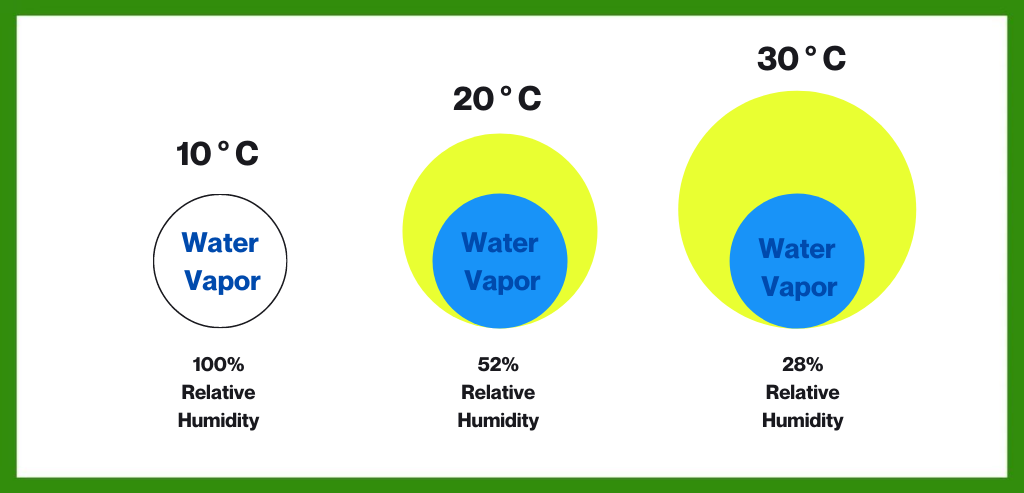
So in this example, the same amount of water vapor in the air that would be 100% relative humidity at 10 degrees Celsius would be only 52% relative humidity at 20 degrees Celsius, and then only 28% relative humidity at 30 degrees Celsius. The amount of water remained the same, but while the air’s ability to hold water kept increasing with the temperature, the relative humidity percent kept decreasing. And conversely, the relative humidity increases as the temperature drops. Which leads to a common misperception:
Actually, Your Plants Don’t Dump Moisture When The Lights Go Out
Coleman has noticed that if growers don’t understand how relative humidity increases as the temperature drops, they often misread the cause of increasing relative humidity at the end of the day:
“The biggest mistake I see with people is misunderstanding the spike of relative humidity as your lights go off. And I’ve had people tell me that once the lights go off, their plants take one last exhaustive transparated breath and dump all this moisture into the air. I’m sorry, but no, it doesn’t. Your container (the air) went from 30 degrees Celsius to 20 degrees Celsius. That’s what caused the spike: The temperature dropped, and you immediately have a relatively greater percentage of moisture in the air compared to the temperature.”
— Coleman Retzlaff, Eastern Canada and East Coast Regional Sales Manager for Quest
4 Requirements To Grow Mold — Which Reveals Why Keeping Relative Humidity Low Is Important
Now that we have clarified what relative humidity is, we can move on to the essential role controlling relative humidity has in preventing mold on your cannabis plants.
Coleman says there are four requirements for mold to grow:
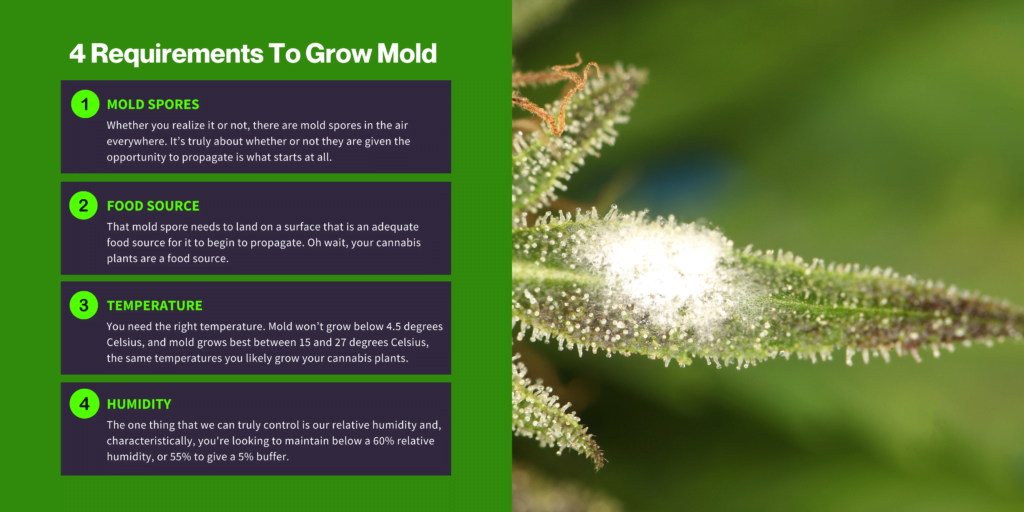
“Mold growth is like the legs on a chair. If I can pull a leg out from under the chair, the chair is going to tip over, so I can eliminate this problem.”
— Coleman Retzlaff, Eastern Canada and East Coast Regional Sales Manager for Quest
So to stop mold from growing, keep your relative humidity low enough. It’s that simple.
But how do you keep the relative humidity low in your grow room? You need a dehumidifier to do that. And how powerful of a dehumidifier do you need? Now comes the simple elegance of “Water In Equals Water Out.”
Water In Equals Water Out: Simplifying The Complex Dehumidifier Sizing Equation
Coleman presented in his The Grower’s Source session a variety of factors that affect how much dehumidifying power you need to maintain a healthy humidity level for your plants. But at the end of the day, it comes down to how much water you give to your plants is fairly close to the amount of water you need to pull out of the air. Thus, water in equals water out.
“We’re trying to burn that into your brain, water in equals water out as an equation is just simply understanding that, hey, if I’m going to put 100 liters of water in a room every day, every single day, I have to have the capability to remove 100 liters from that room if we’re going to control relative humidity.”
— Coleman Retzlaff, Eastern Canada and East Coast Regional Sales Manager for Quest
If that’s good enough for you for determining the right size dehumidifier, simply skip on to the end of the article and see how you can engage with The Grower’s Source community to learn more about better growing your cannabis plants and business. However, if you want to understand the factors, math, and steps Coleman took to get there, read on, especially because you’ll also get several more worthwhile insights along the way.
WATER IN:
So let’s look at “Water In” first. “Water in” is the water you put into your plants. It may come as a surprise that your plants retain barely any of the water you give them. Quest has determined, with the help of many PhDs and cultivation people, that plants transpire 96 or 97% of that water you give them. That 3 or 4 percent plants retain is a rounding error, best to ignore to keep the sizing equation simple.
How do you measure how much water you are putting into your plants? That depends on how you water them:
- If you water your plants in pots, just measure how many liters a day you put into your plants. If you average a few day’s worth of watering, be sure that you only count the water given during the days you measure. Coleman says a common mistake is to say they are averaging their watering over 4 days, but only count the water given for three.
- If you water your plants with a reservoir system, where you constantly have water looping and spraying on your roots, then first turn off your automatic refill valve, then see how much your reservoir drops in a 24-hour period. Do this when your plants are at least in week six or seven, at the peak of their growth.
WATER OUT:
Here are 4 ways that the water you put into your plants will eventually leave the room:
- Your dehumidifier is the main way that water can leave the grow room. We’ll cover that more in depth later when we do the detailed dehumidifier sizing math.
- Your air conditioner will dehumidify while it cools the room. To the point that an excessively oversized air conditioner could even dehumidify at a greater rate than your plants transpire.
- Down the drain: Roughly 10% of the water you put into pots ends up as leachate that comes out the bottom of your pots and goes down the drain. Or perhaps up to 20% in cases such as if you are trying to avoid a buildup of salts in a coco medium. Quest does use this 10% number in their equation: If you put in 100 liters a day, then they say to deduct 10% or 10 liters to say that 90 liters is your “Water In” number.
- Vapor pressure: Although it’s hard to measure (and so it is skipped in Quest’s calculations), it’s good to be aware of the situations where vapor pressure will be higher, and how it can both increase and decrease relative humidity. In this case we aren’t talking about the vapor pressure meaning how water leaves the leaf of a plant. We’re referring to the vapor pressure of the building you grow in. Humidity always goes from a wet location to a dry location. So, whenever you open the door, moisture is going to leave that room if it’s more humid, or come in if it’s less humid. Even when the door stays closed, humidity will transfer through cracks and screw holes. And when you grow in a place like Puerto Rico, where it is more humid outside, the humidity will be pushing into the grow room.
So now that we’ve gone through (and eventually chose to ignore many of) the elements of the “water in equals water out” equation, let’s look at a simple example Coleman provided to determine what the water amount coming in that you have to then take out:
- We have 100 plants, feeding them two liters per day, equals 200 liters a day.
- Minus 10% for drain leachate, equals 180 liters a day.
- Times 2.1 pints per liter equals 378 pints (or pounds) per day worth of “load” to take out with dehumidification (dehumidifiers that follow the AHAM standard are measured on pints per day at 80 degrees and 60% humidity).
- That’s it — in this example you need a dehumidifier that can take out 378 pints of water a day.
Sounds simple? It is. If you want to do a more technical, scientific calculation, Quest will gladly take your call and help you in determining the right size dehumidifier for your grow rooms.
However, this simplicity didn’t last for very long, as Coleman then offered up 7 other considerations that can affect your cannabis grow room humidity levels:
7 Other Factors To Consider That Affect Relative Humidity
- Sealed / unsealed grow space: Whether you have a sealed or an unsealed grow space has implications upon how well your equipment is going to perform.
- Operating temperatures: The same equipment will take less water out of the air at a lower temperature and more water out of the air at a higher temperature.
- Carbon Dioxide: Some growers add CO2 to boost yield. The CO2 matters less than that growers will want a sealed room to introduce the CO2, so see point #1 above.
- Greenhouses are notoriously leaky, making them harder to consistently dehumidify. Plus, greenhouses control their temperature during hot months through ventilation, but ventilation is counterproductive to dehumidification. So a scheme for greenhouses is that during daylight hours you ventilate until dark, then seal up the greenhouse and aggressively dehumidify. Mold really needs a high relative humidity condition for 24 hours to propagate, so the theory is to break the cycle by taking eight or 12 hours and really crush the relative humidity in that room that mold needs to begin to propagate and flourish.
- Vegetative phase: Through the vegetative phase you progressively increase the amount of water you provide your plants as they grow. More “water in” means you will need to size the dehumidifier correctly to take that greater water back out to reach our target relative humidity.
- Bloom phase: Now you are pulling back on the amount of water you provide the plants to avoid mold growing in your buds. Until late flowering, when you boost the water to flush nutrients from your plants.
- Seasonal conditions: Cold winter temperatures make the outside air so dry that vapor pressure (again, building not plant leaves) sucks the humidity from the grow room outside.
“A lot of times I have conversations with greenhouse growers about how unsealed a greenhouse can be. Well for as low as I get the relative humidity in that greenhouse, every opening in that greenhouse … or heck, some people will even think you can dehumidify a greenhouse with a mesh side opening. Well, the water outside is going to come in and equalize.”
— Coleman Retzlaff, Eastern Canada and East Coast Regional Sales Manager for Quest
Know Your Humidity Target and Keep Mold In Check
Determining the right size dehumidifier and calculating your dehumidifying needs is both simple and complex. While it’s good to understand the various factors that affect your humidity load, ultimately it’s nice to have the simple “water in equals water out” equation to rely upon. Coleman’s analogy that “temperature is a container” explains relative humidity in an understandable way that makes it easier to make good decisions about the health of your plants.
You can watch The Grower’s Source session that inspired this article by clicking on the video shown below.
Can You Reuse Condensate Water From Your Dehumidifier?
Coleman also talked about whether you can reuse condensate water from your dehumidifier to water your plants — and how to avoid potential pitfalls if you do. (Click here to jump to timestamp 37:10 to hear how.)
Featured Image Credits: Canva Stock Photos

Want to keep the discussion going?
Log onto The Grower’s Source App to ask a question of our group of experts, or to read up on the latest comments on this topic.
You can also engage your fellow master and hobby growers about many other cannabis topics on your Grower’s Source App.

CONNECT
Connect and maintain relationships between you and other Canadian cannabis industry growers.
COLLABORATE
Overcome challenges together with your fellow growers, learn, develop collective knowledge and a global competitive edge.
GROW
Grow better, aim for sustainability, quality, and cost-effectiveness.




